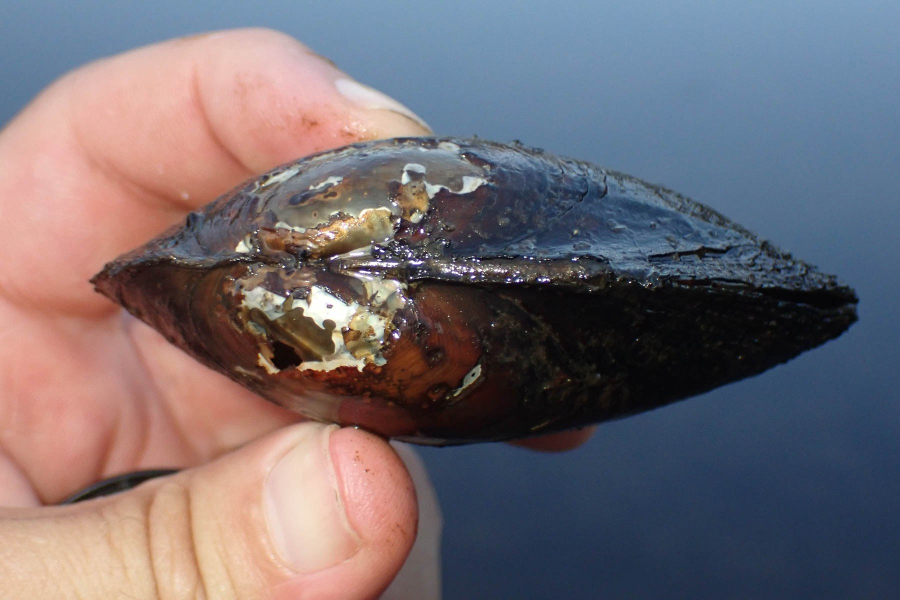How the eastern floater flexes its muscles
The eastern floater can withstand low dissolved oxygen levels and uses a variety of host fish for reproduction

Freshwater mussels are among the most endangered group of organisms in the Chesapeake Bay watershed. Of the 25 species of mussels that are native to the watershed, many are threatened or endangered. Across the country, we’ve lost close to 90% of mussel populations.
But not all mussels are equally as vulnerable. The eastern floater, for example, is one of the few freshwater mussels in the Chesapeake Bay watershed that is considered stable within its range. The bivalve is widespread throughout rivers in Maryland, Virginia and Washington, D.C. Only in West Virginia is it listed as “imperiled.”
One of the reasons that the eastern floater is so common is because it is not very particular about the host fish it needs for reproduction. Freshwater mussels have a very unique way of reproducing, which is that the female will expel larvae into the water so that it can be attached to the gills or fins of fish. These “host fish” transport the larvae to other parts of a river or lake so that the species can spread further.
While certain mussels will only successfully pair with one or two species of host fish, the eastern is a generalist. Reported host fish for the eastern floater include the common carp, bluegill, pumpkinseed, yellow perch, white sucker, rock bass and sticklebacks. Mussels choose certain host fish for evolutionary and geographic reasons. In a large river basin like the Potomac River, where eastern floaters are common, there is a good diversity of fish that the mussel evolved to rely on. Other mussels native to smaller rivers may only be adapted to utilize one or two hosts.
The other reason eastern floaters are stable is because they are relatively tolerant of low water quality. They have been found in lakes and rivers with low levels of dissolved oxygen where other species of mussels wouldn’t have survived.
However, the eastern mussel’s weak spot is its relatively thin shell. Many fish and mammal predators prefer eastern mussels because their shell can easily be broken.
As the saying goes, nobody's perfect.
Whether it’s an eastern floater, an eastern elliptio, a yellow lampmussel or one of the other mussels native to the Bay watershed, we need to protect these species because of the water quality benefits they provide. Mussels are filter feeders, which means they siphon sediment, algae and bacteria from the water, which makes it cleaner. Mussels also play a key role in the food chain and add biodiversity to our tributaries.
Many efforts are underway to protect freshwater mussels, such as reintroducing them in rivers that are healthy enough to support the organism, and improving fish passage so that those host fish can more easily transport mussels across a river.
Want to know about the other mussels and invertebrates native to the Bay watershed? Visit our Field Guide.

Comments
There are no comments.
Thank you!
Your comment has been received. Before it can be published, the comment will be reviewed by our team to ensure it adheres with our rules of engagement.
Back to recent stories